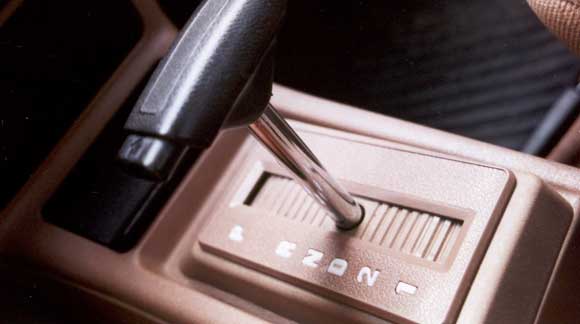Usually, Park (P) is one of only two selections in which the car's engine can be started, the other being Neutral (N)
In many modern cars and trucks, the driver must have the foot brake applied before the transmission can be taken out of park.
The Park position is omitted on buses/coaches with automatic transmission (on which a parking pawl is not practical), which must be placed in neutral with the parking brakes set.
Advice is given in some owner's manuals that if the vehicle is parked on a steep slope using the park lock only, it may not be possible to release the park lock (move the selector lever out of "P"). Another vehicle may be required to push the stuck vehicle uphill slightly to remove the loading on the park lock pawl.
Most automobiles require P or N to be set on the selector lever before the internal combustion engine can be started. This is typically achieved via a normally open inhibitor switch, which is wired in series with the starter motor engagement circuit, and is only closed when P or N is selected, thus completing the circuit (when the key is turned to the start position)
- Park (P) selection mechanically locks the output shaft of transmission, restricting the vehicle from moving in any direction.
- A parking pawl prevents the transmission from rotating, and therefore the vehicle from moving, although the vehicle's non-driven roadwheels may still rotate freely
- it is recommended to use the hand brake (or parking brake) because this actually locks (in most cases) the rear wheels and prevents them from moving.
- This also increases the life of the transmission and the park pin mechanism, because parking on an incline with the transmission in park without the parking brake engaged will cause undue stress on the parking pin.
- It should be noted that locking the transmission output shaft does not positively lock the driving wheels.
- It is typical of front-wheel-drive vehicles for the parking brake to be on the rear (non-driving) wheels
- use of both the parking brake and the transmission park lock provides the greatest security against unintended movement on slopes.
- A car should be allowed to come to a complete stop before setting the transmission into park to prevent damage
-
-



